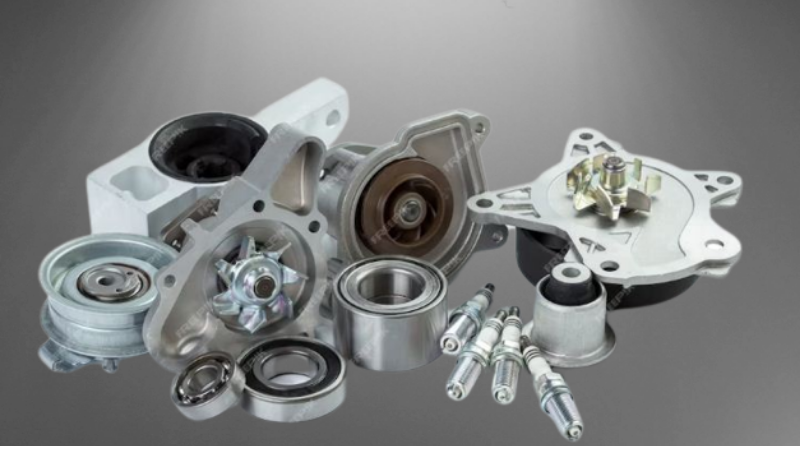
Cars weren't economical or efficient in the past few decades. In fact, functionality was the sole essential component. However, the scenario has completely changed now as more and more automobile enthusiasts choose to drive better, safer and more efficient vehicles. Are you aware that a car built made using the best materials will consume less fuel while still having the required safety features? A lot of brainstorming, design, and science go into making a car. A car's durability, design, and often speed are all influenced by the various materials that go into its construction.
Because different exotic metals have varied strengths and other characteristics, using them ensures that customers receive the best of both worlds in terms of appearance and quality. Knowing what automobiles are constructed of is important if you're considering selling your vehicle as scrap; you might even discover that it has more value than you initially imagined.
This blog explores some of the top materials used to manufacture automobiles as well as automotive precision parts:
1. Steel
Steel production has advanced significantly in the past few decades. An automobile requires many sorts of steel for its various components and regions. Steel is the primary material used to make door panels, the car's chassis, and support beams. Additionally, it is utilized in automobile mufflers and exhaust pipes. However, due to its strength, it is mostly utilized on the car's frame. This indicates that it can withstand impact better. A typical car weighs 2400 pounds of steel, whereas an SUV weighs 3000 pounds. As a result, they aid in keeping you safe while driving because cars' significant weight and support come from the metal used to manufacture it.
2. Plastic
Petroleum byproducts (gas and oil) are utilized to make the plastics that are used to make automobiles. Because they are widely used in the production of automobiles, plastics pose a threat to steel. They are pliable yet sturdy enough to maintain the contour of the structure. Nearly 50% automotive components are manufactured making use of plastic. It is the primary material used to create the dashboard, door handles, pipes, and air vents. Plastics are the perfect material for a variety of parts due to their strength, adaptability, and low weight.
3. Aluminum
Aluminum can be molded in any desired way, and this attribute makes it the most preferred material in the manufacture of automobiles. It made up only 2% of an automobile's total parts in 1970; in modern times, it can constitute up to 15%. The wheels, which are crucial components, have been replaced with aluminum in place of steel. Even the majority of engine blocks are made up of steel. Despite not being quite as strong as iron, it is lighter, which improves performance.
4. Rubber
Engine mounts, hoses, wiper blades, and belts are all made of rubber. Rubber is equally affordable, strong, and flexible as plastic. As a result, it can work in a variety of automotive precision parts, and it can withstand heat if the car does. The majority of people are unaware that a sizable portion of the rubber produced is used to build vehicle parts.
5. Fiberglass
The majority of people believe that glass and fiberglass are both different materials. This is untrue, though. Small, delicate glass strands are used to make fiberglass. The majority of it is air, not glass. It is possible to create smaller, lighter objects by weaving the glass into these tiny sheets and painting resin on them. The automobile sector takes advantage of fiberglass greatly. It helps replace steel in places where it can readily combat rust since it is non-corrosive. Fiberglass resists flames. Users can exit their cars without being hurt in the event of an accident. Front bumpers, doors, roofs, casings, and wheels can all be made of it. Machinery parts manufacturers in India and around the globe make use of fiberglass in many applications.
6. Glass
Glass is currently employed in automotive mirrors, back-up camera lenses, and navigation screens. Glass laminates are used to make the windshields. Users are guaranteed the highest levels of safety; thanks to glass lamination, particularly in the event of an accident. Lamination entails sandwiching a thin vinyl film between two glasses. This makes sure that if the glass is smashed, there won't be any shuttering.
7. Lead
Because it is heavy and helps to balance the car, lead is a great metal. Because of this, the majority of wheels are constructed of lead, aluminum, and some fiberglass. Lead is also used in the battery, allowing it to operate at acceptable temperatures even when the automobile heats up.
8. Magnesium
Magnesium makes up the body, the framework, and some of the engine components. Since 1930, it has been utilized for these regions of the vehicles. It is superior since it is lighter than steel and aluminum by 75% and 33%, respectively. To keep the equilibrium of the vehicles intact, it is utilized only in confined spaces.
9. Titanium
The metal titanium is very pricey. The majority of industries avoid employing it in their production process since newer, less expensive mining techniques are required. However, some industries employ it in metallic components instead of the more common steel and aluminum. Essentially, it improves the aesthetics of the automobiles.
Concluding Remarks
SAN Automotive is one of India’s leading manufacturers of a wide range of sheet metal works that include Sheet Metal Pressing and Forming, Light, Medium, and Heavy Fabrication, Component Assemblies, Tooling, Surface Coating Solutions. The company has earned a formidable reputation as one of the top machinery parts manufacturers in India. Manufacturing and supplying automotive precision parts for OEMs around the globe, the company takes utmost care of quality, on-time delivery, and cost-effectiveness while meeting specific customer needs and expectations. Being a customer-centric organization, SAN Automotive believes in a ‘quality-in-all-we-do’ philosophy with a total company effort and commitment to continuous improvement. More details about the company’s complete product portfolio can be explored on its website.